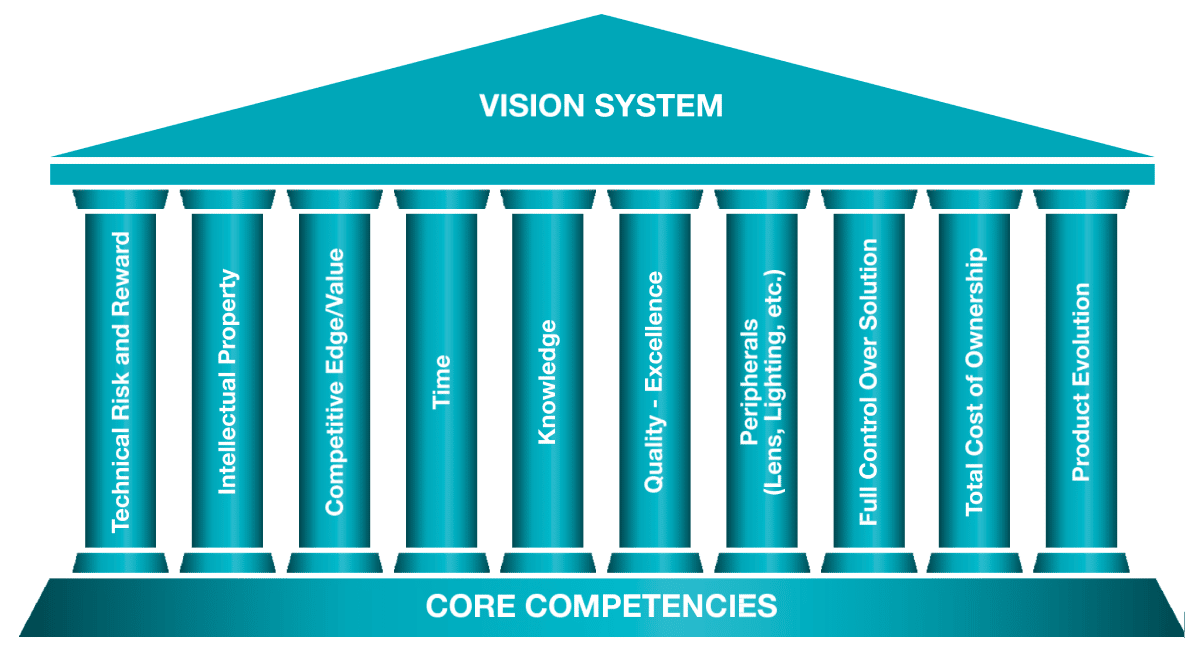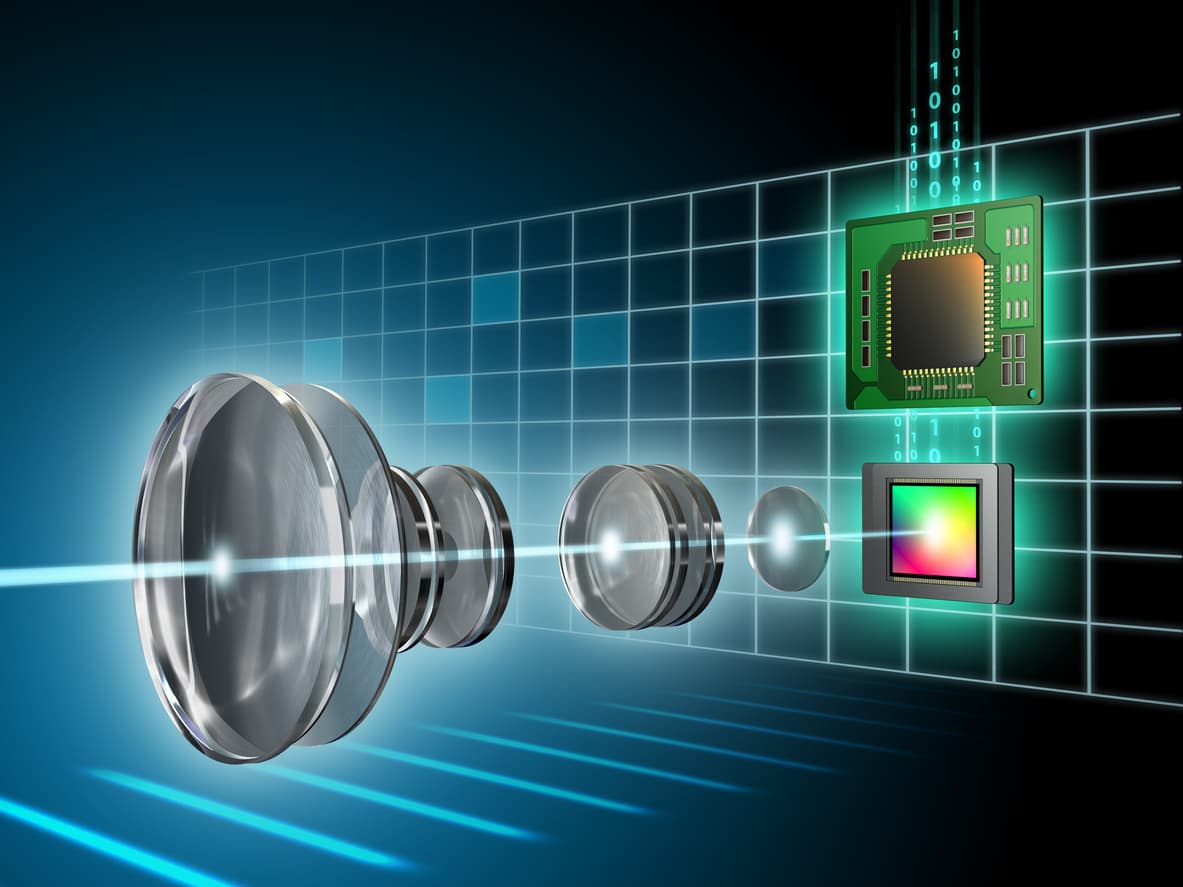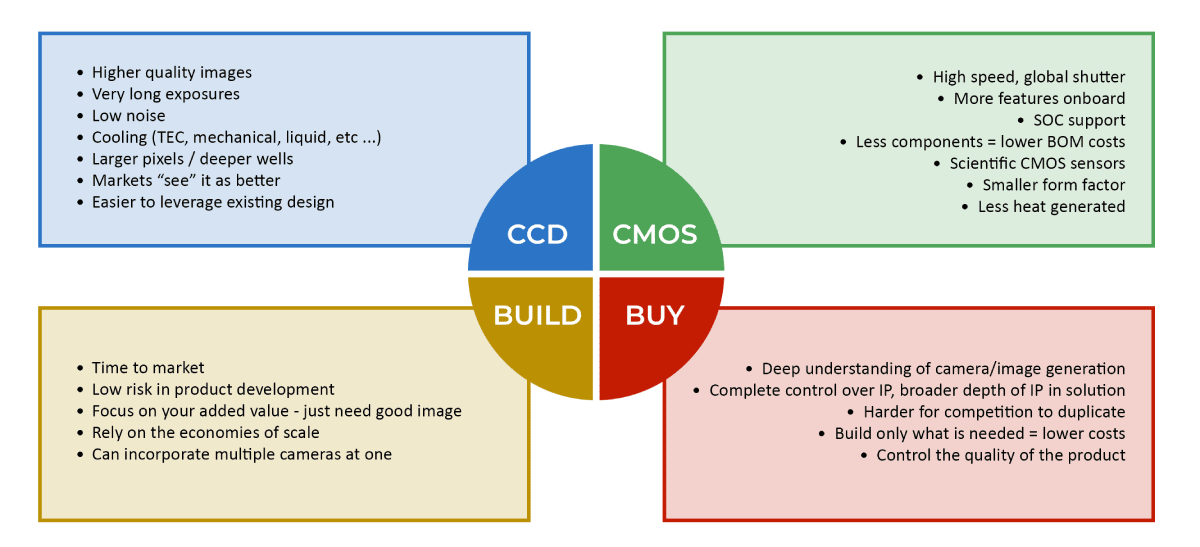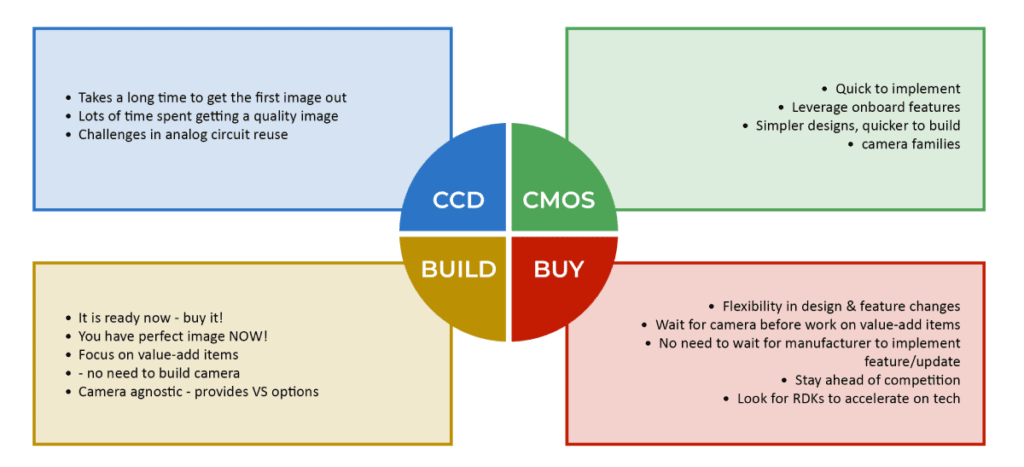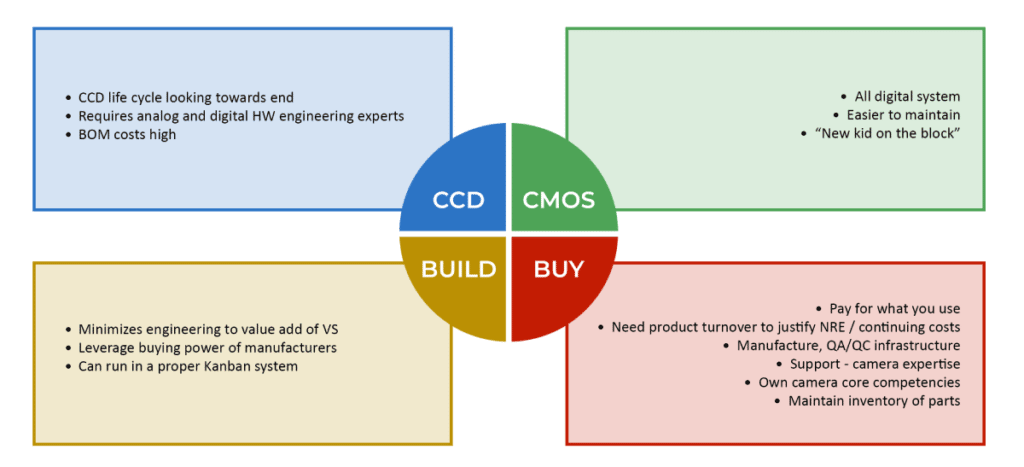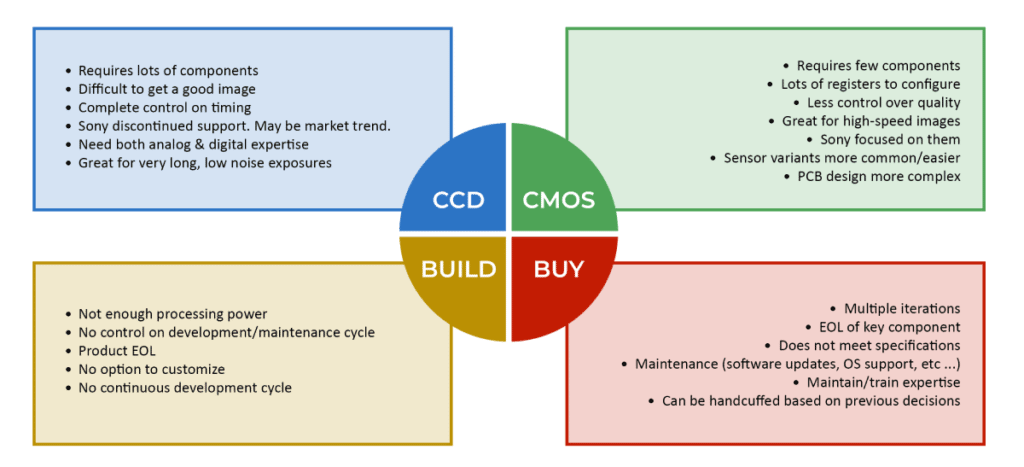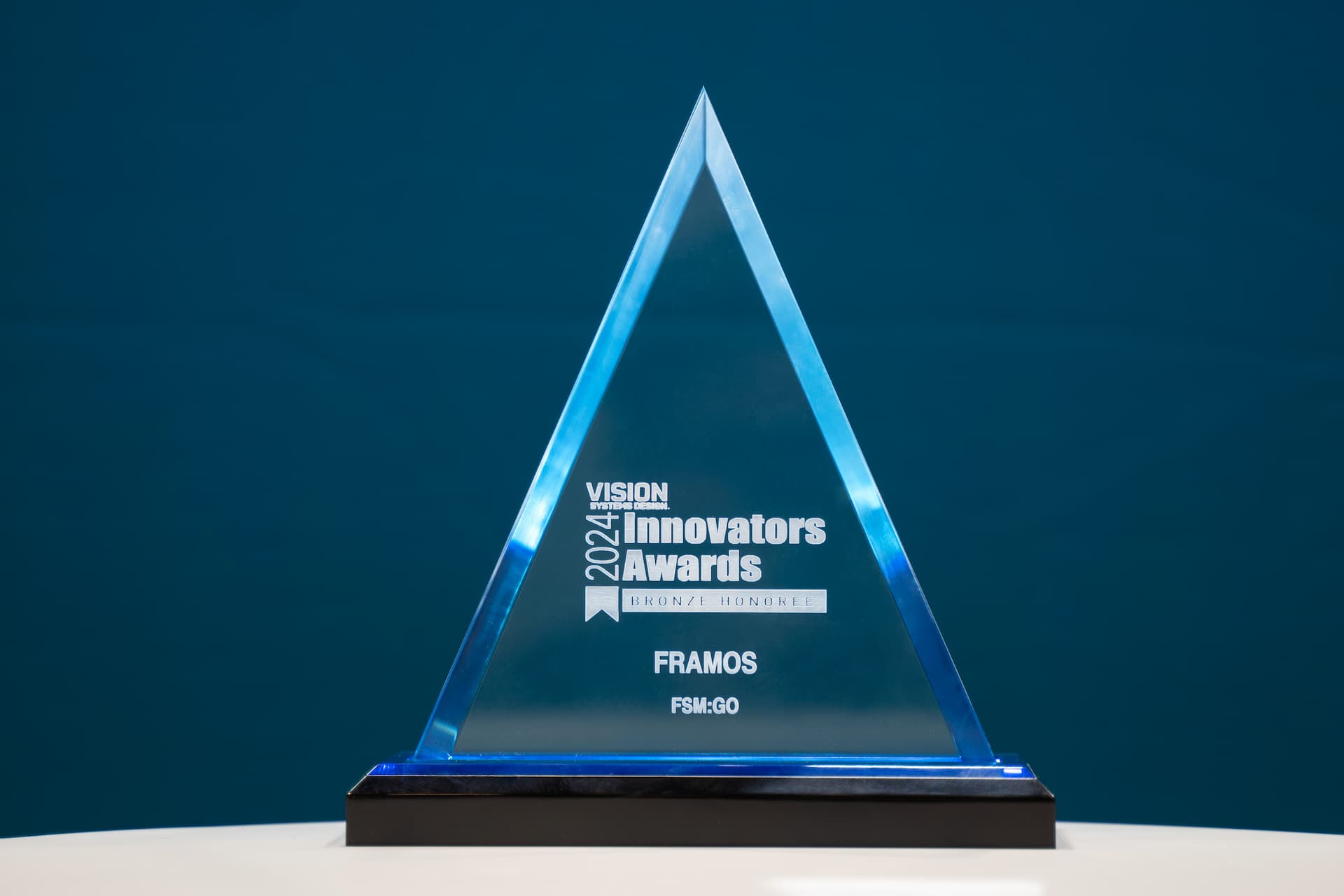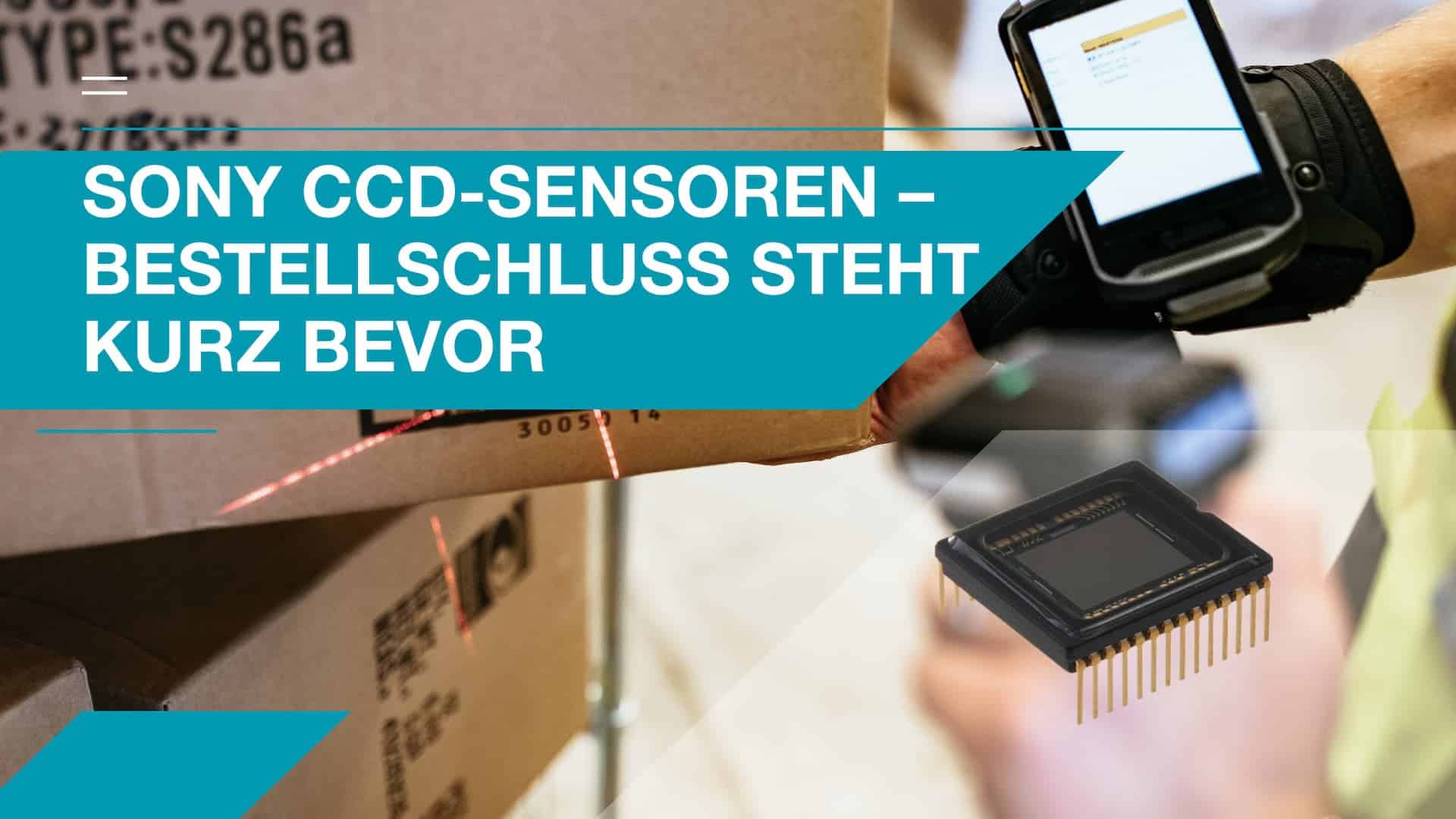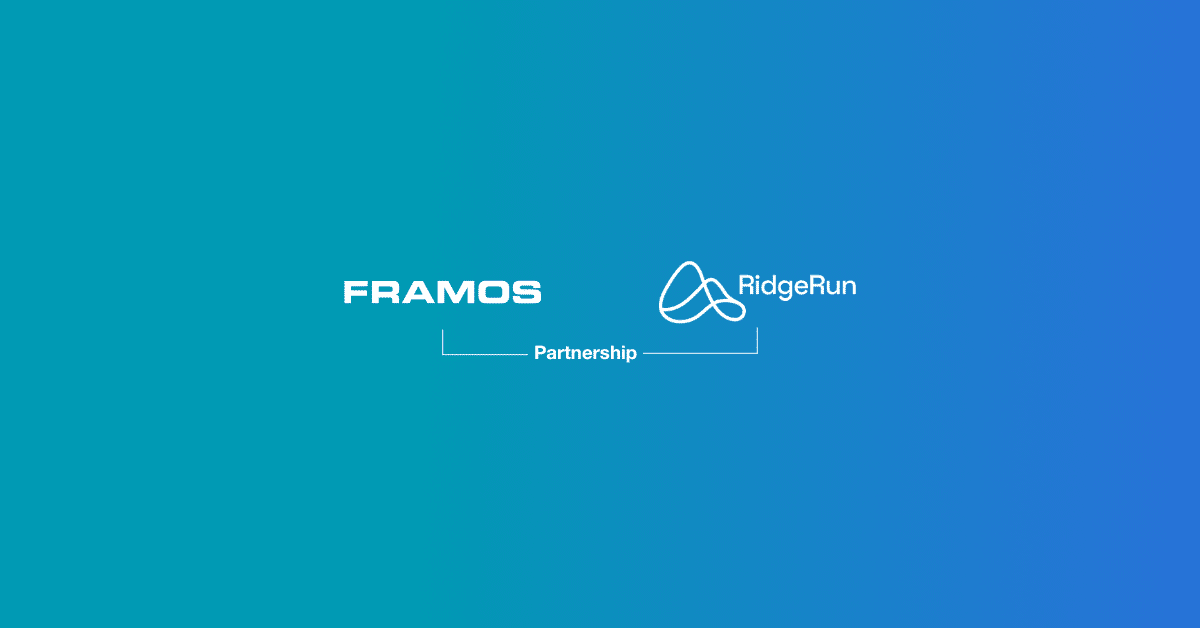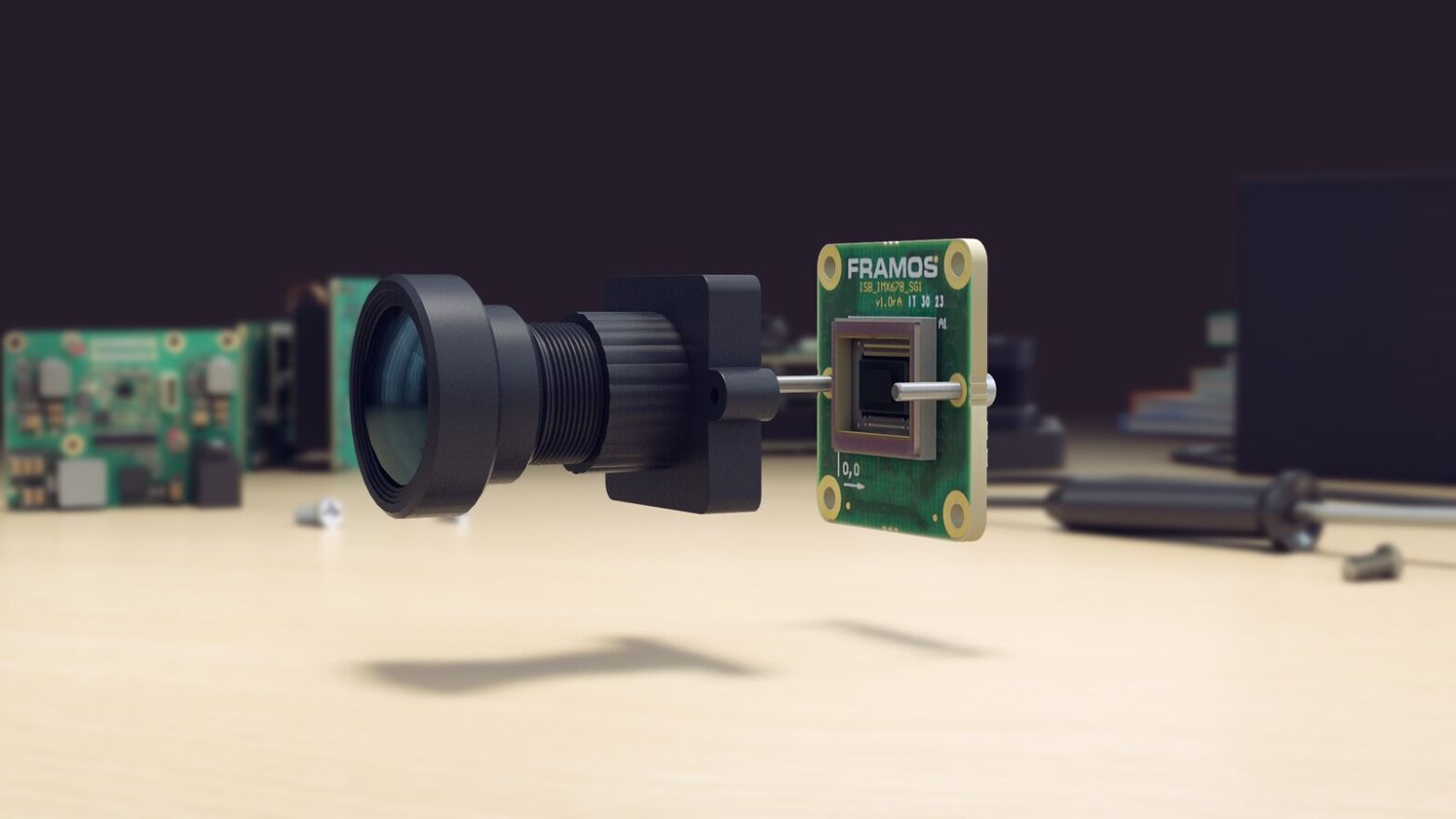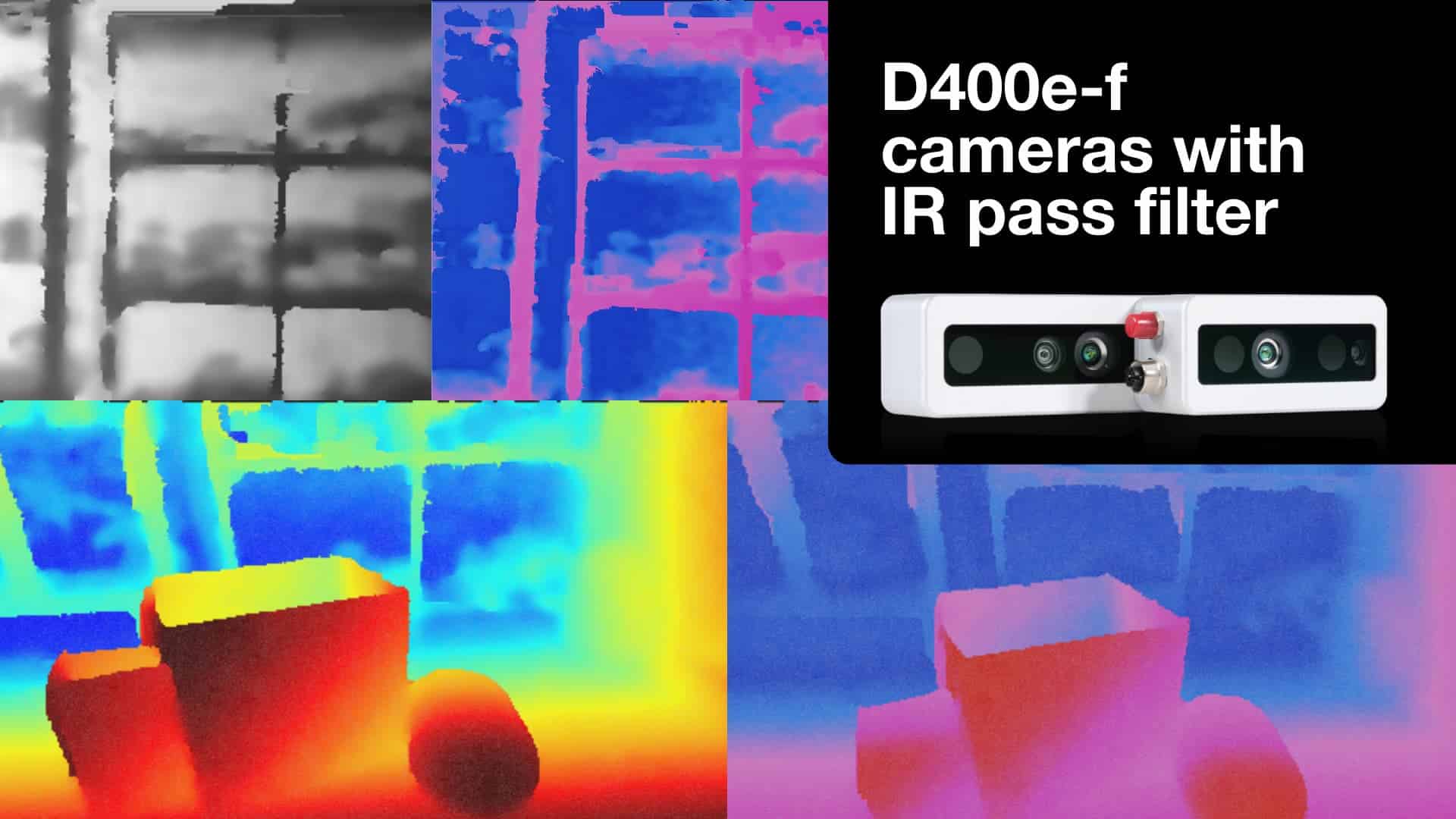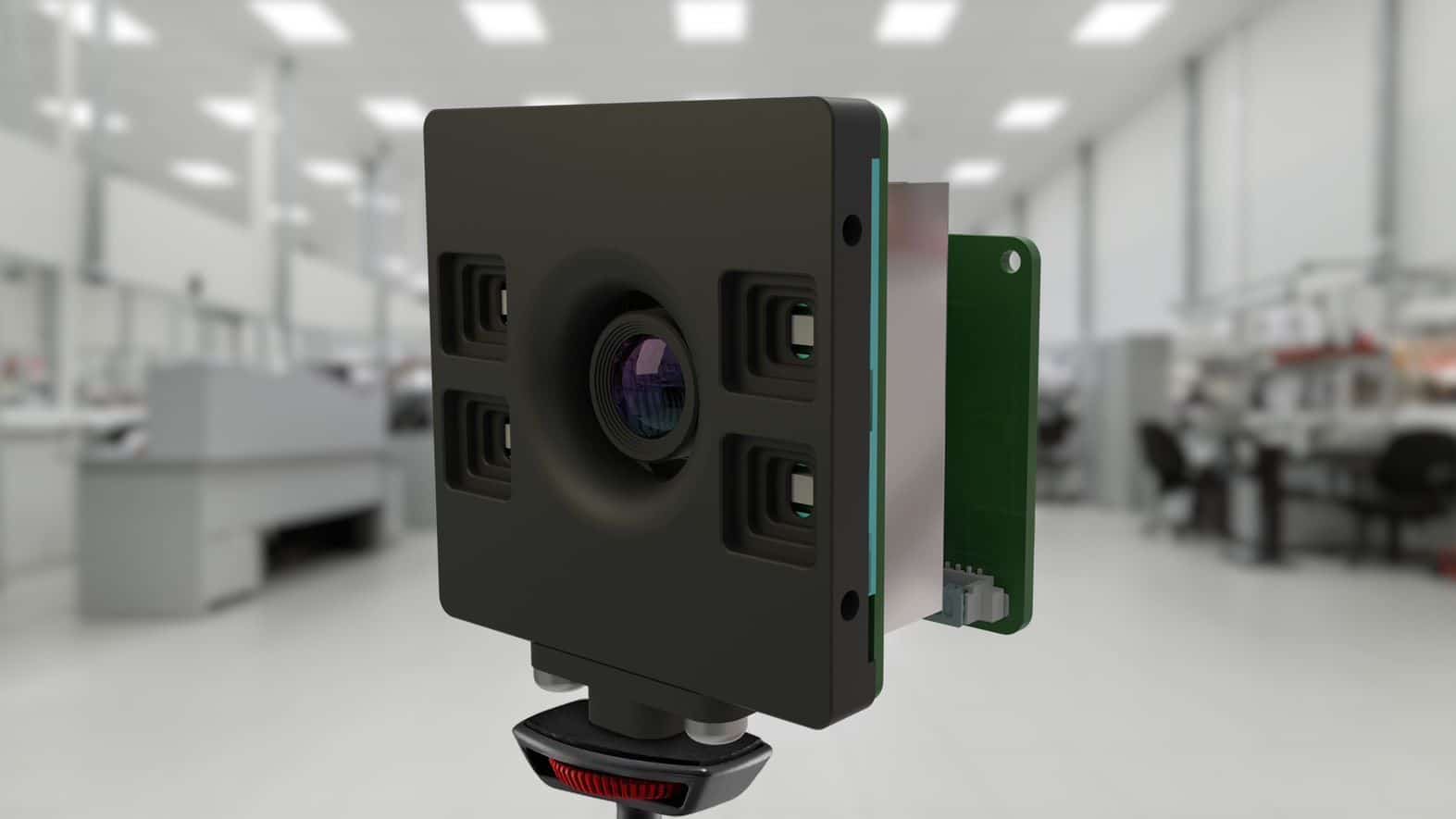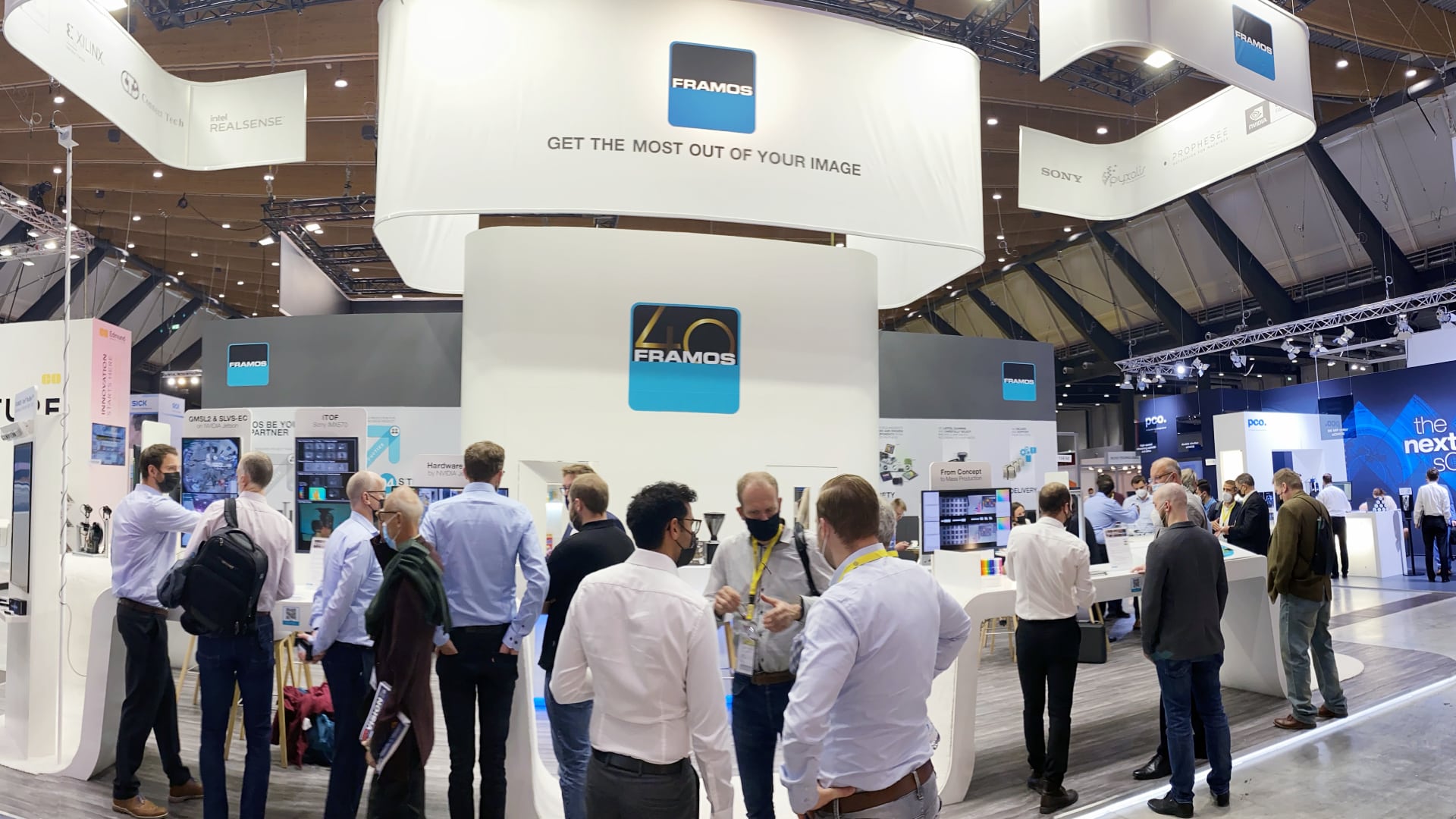When developing a computer vision system, companies are confronted with a dilemma: should they buy an existing off-the-shelf solution, or develop their own?
There are undoubted advances to developing your own technology. You own the intellectual property (IP), you control the feature set, and you control the product lifecycle. In an industry where the use of computer vision is new or evolving, developing your own vision system could very well give your product offering a competitive advantage to help edge out competitors.
For some applications, off-the-shelf solutions may not offer the functionality or feature set that your customers need. In those cases, there is a powerful argument for investing in engineering your own vision system.
However, there is also a significant risk in developing your own technology. Vision systems engineering is a highly specialized competency, and unless your company is already developing vision systems, it is unlikely that your engineering team would be fully comfortable with every aspect of the project. Developing a vision system requires experienced hardware engineers, software developers who are experienced in working with data communications protocols and device drivers, and people with at least a nodding familiarity with optics, color theory, image data encoding, and image tuning.
This means that in addition to the development costs, your total cost of ownership for this technology will have to include the cost of attracting and recruiting the necessary engineering talent to complete the job.
The supply chain for imaging and optical components can also be complicated to navigate. In some ways, it’s a small industry. Most optics manufacturers are located in east Asia, and there can be supply chain delays or interruptions, depending on where your components are sourced.
The good news is that you don’t have to go it alone for every part of the technology stack. Imaging companies like FRAMOS can supply modules for key components of a vision system, device drivers, and technical services and support for specialized tasks including optical alignment, and the development of tuned image profiles for your choice of optics, sensor, and application.
KEY COMPONENTS OF A COMPUTER VISION SYSTEM
The core of any vision system is the image sensor. Your intended application will determine your choice of sensor, and the sensor will set the requirements for the rest of the technology stack, including the optics, the data interfaces, and the image processor component. Because of this, the first step in developing a vision system is to develop a set of specifications that will allow you to make an informed choice when selecting an image sensor.
The Image Sensor
Here are some of the key factors to include when developing specifications for your vision system sensor:
- Do you require a 2D image, or a 3D depth sensing technology?
- What is the required operating spectrum of the sensor? Is this for visible light, or short-wave infrared? Will your vision system be operating under controlled conditions or outside? Will your vision system be required to operate in low light conditions?
- What is the desired resolution of the acquired image or video?
- What is the required image acquisition speed and frame rate?
- Will your application require a global shutter, to capture high-speed motion, or will a rolling shutter sensor be adequate?
- Is a charge-coupled device (CCD) the best technology for your application, or would a complementary metal–oxide–semiconductor (CMOS) sensor be more appropriate?
The whole issue of CCD versus CMOS sensors can be quite complex. Until a few years ago, CCD sensors offered clear advantages for some applications the CMOS sensors could not, but that has changed, and CCD sensors are being phased out of use entirely. This issue is discussed in detail in our white paper “To Build or to Buy?”, which can be found here.
Optics
Your vision system must be designed to support the full range of focal length, lighting conditions, and field of view required for the intended application.
The optics you chose for your vision system will be largely determined by two things: the size of the sensor, and the operating requirements for the image circle, and the operating range of the vision system. In some cases, an inexpensive S-mount M12 lens might be the best choice, but for larger image sensors, or applications where the operating focus and iris setting of the lens must adapt to changing conditions, a C/CS mount lens might be a better choice.
Some specialized applications will dictate your choice of optics. For example, if you are using a short-wave infrared (SWIR) sensor, you are limited to optics designed for the infrared spectrum, (ordinary glass elements absorb infrared light). Some machine vision applications require you to precisely determine the alignment of the objects your vision system is observing. In those cases you may need to use a telecentric lens in order to generate an image with an orthographic projection.
In determining the optics requirements for your vision system, you will also have to select and design for an appropriate lens mount and provide for the correct optical alignment of components during the manufacturing process.
Sensor Module
The sensor module is the main component of any optical module. It not only acts as a substrate for the sensor and lens mount, but must also provide access to the data lines on the sensor, and a physical connection to an appropriate sensor adapter for the data communications protocol employed in your vision system to get the raw image data from the image sensor to an image processor or image processor adapter. Because of the high density of the data lines connecting to the sensor, and the requirement for a multi-layer PCB design, this component can present a high engineering cost to develop from scratch.
Most imaging companies or image sensor distributors supply a variety of sensor modules for different combinations of sensor type and data communication protocol. In determining whether to build or buy your vision system, even if you choose to design and build your own system, it may make sense to buy an off-the-shelf sensor module when you source the sensor and optics for your design.

Data Communications Protocol
While the data communications protocol used by a vision system isn’t a tangible component, it will influence your selection of components when engineering a vision system.
The most commonly applied communications protocols in vision systems are the mobile industry processor interface (MIPI) and MIPI cameral serial interface 2 and 3 (CSI-2 / CSI-3). MIPI is a fast serial protocol suitable for use with short ribbon connectors, but it essentially requires your optical components, image sensor, and image processor to all be inside the same enclosure.
CSI-2 and CSI-3 are updated extensions of the MIPI standard specific to imaging. These standards are faster than other serial protocols like USB-3, support multiple channels, and are relatively inexpensive to implement.
For applications like the automotive industry and robotics, where you may not have room to install the image processing hardware where the image processor is, the gigabit multimedia serial link protocol (GMSL) is often used, since it allows the high-speed transfer of raw image data over relatively long distances over an inexpensive coaxial cable. This protocol is almost universally employed for things like automotive back-up cameras and robots using multiple sensors.
An emerging standard for high resolution image sensors is Sony’s SLVS-EC (scalable low-voltage signaling [with] embedded clock). This protocol may be the best choice for vision systems requiring extremely fast data transfer.
Your choice of data communications protocol will drive engineering decisions for the components of your vision system technology stack for every component between the sensor module and the image processor. The choice of protocol will influence everything from what drivers you use to what sort of connectors you mount on the PCB.
If you decide to build your own vision system, look for suppliers who can provide modules to support your choice of communications protocol.

Image Processor Adapter
If you are building your own embedded image processing hardware from the ground up, you may choose to port the raw image data directly from the sensor module to the image processor.
However, if you choose to develop a system based on a small board computer like the Raspberry Pi, or an embedded computer like the NVIDIA Jetson series, an image processor adapter is an invaluable off-the-shelf component that can simplify your task.
Image Processor Adapters provide a variety of inputs for different data communications protocols, including MIPI, CSI-2, and SLVS-EC. They’re generally designed to talk to a specific platform, whether it’s an embedded computer like the NVIDIA Jetson Orrin, or a field-programmable gate array (FPGA) like the Xilinx Kintex.
Image Processor
No vision system is complete without some kind of image processor. The image processor takes the raw data from the image sensor, decodes it, processes the data to generate color channel data, and final constructs the image, which might be further re-encoded as part of a video data stream. The image processor will generally apply an image tuning profile to the raw image data, to help correct the image brightness and color for the combination of sensor, optics, and lighting specific to the vision system.
Even if your ultimate goal is to design your own embedded image processing hardware, your engineers are unlikely to immediately start designing circuit boards. There are a wide variety of research and development platforms and developer kits available from imaging companies and image component distributors to use as a first step in developing your own vision system.
BUILDING VERSUS BUYING A VISION SYSTEM
The decision of whether to build or buy a vision system can be daunting. Here is a list of advantages to consider for each option:
Pros of Buying a Vision System
- Shortens your time to market so you can capitalize on an opportunity
- Low risk in product development
- Allows you to focus on your added value – you just need a good image
- Allows you to capitalize on economies of scale to be more competitive
- Can incorporate multiple cameras at one
Pros of Building a Vision System
- You can develop and capitalize on a deep understanding of camera/image generation
- Complete control over IP, a broader depth of IP in your solution
- Your custom solution is harder for your competition to duplicate
- By building only what’s needed you can lower costs and be more competitive
- You control the quality of the product

Download our whitepaper to learn more about building vs buying a vision system
CONCLUSION - TO BUILD OR BUY A VISION SYSTEM
It is always important to be competitive and own your intellectual property. Because of this it might makes sense to consider building your own custom vision system.
Depending on the application, your requirements might best be met with your own custom design. If you can execute on that design in a way that makes your vision system difficult for competitors to produce, or more inexpensive than any off-the-shelf solution that your competitors might offer, building your own vision system might set you on the path to competitive dominance. If you can force your competition to always be in the position of trying to catch up – you win.
Building your own vision system requires long-term thinking. The timeline for your project has to start with recruiting the necessary engineering talent to build the system in the first place, and continue for the entire lifetime of the product. In addition to creating a product, you have to support it, and make provisions for what happens after the end-of-life for your vision system.
But it’s not necessary to take on all the risk yourself. You can leverage support from imaging companies and suppliers to help you design and realize your vision system. You can offload the engineering expense by purchasing common components of the vision system like sensor modules or optical modules for which owning the IP won’t provide any competitive advantage.
You can leverage third-party services like optical alignment in order to reduce plant costs where an in-house investment might not make sense. You can also take advantage of contracted expertise for services like image tuning that are more-or-less a one-off for each product you develop.
The choice to build your own vision system can be daunting, and fraught with risk. It can also reward you with a significant competitive advantage and technological lead over your competitors.
See what to look for in your vision system building partner.
